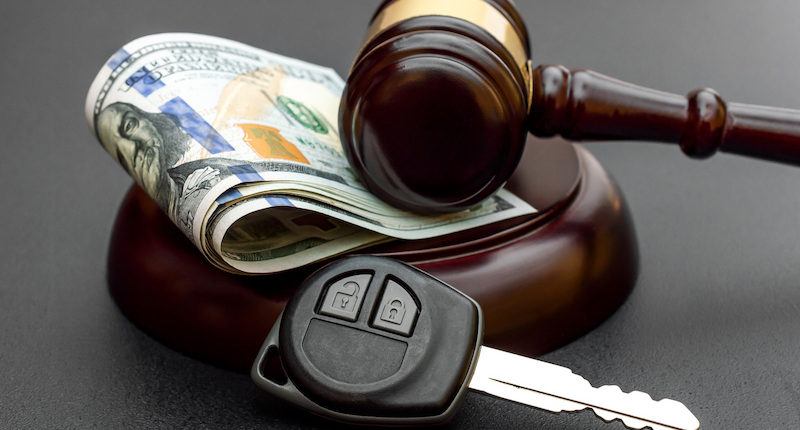DUI vs DWI: What’s the Difference?

Have you questioned DUI vs DWI? If you’re looking to find out the key differences, then read this helpful article.
Read on now.
DUI vs DWI
It is not uncommon for the acronyms DUI and DWI to get thrown around a lot and used interchangeably when referring to charges for drunk driving. Some states may only have one charge and not the other. In other states, they may have both but they could either mean the same thing or mean two slightly different things carrying two different sets of charges. So, it is safe to say it can be quite confusing.
How do the drunk driving laws work in California? Are a DUI and a DWI two different charges? Do they carry different penalties? Does California even recognize both? Let’s find out the differences between DUI vs DWI.
DUI vs DWI in California
In general, a DWI stands for Driving While Intoxicated, and a DUI stands for Drive Under the Influence. They both refer to a driver that is impaired (intoxicated) while driving. In California, however, the term DUI is solely used.
All charges and legal proceedings that ensue due to someone driving while under the influence will be referenced as such – a DUI. If you are visiting another state and are charged with a DWI, the courts, law enforcement, and the DMV in the State of California will treat the DWI just as they would a DUI.
Charges for DUI in California
There are a couple of different charges for DUIs in California. Two that are most common include:
- Vehicle Code 23152(a) VC: This charge is the most common and refers to the driver being charged with driving under the influence.
- Vehicle Code 23152(f) VC: Another common charge. This one is for a driver who is driving under the influence of drugs (not alcohol).
- Vehicle Code 23152(g) VC: And finally, this is one that refers to the charge of a driver who has been caught for driving under the influence of both drugs and
The legal limit for alcohol consumption in the State of California is .08 percent or higher. With cases of .08% BAC and higher, the DMV will take administration action – as well as if the chemical testing was refused. This action is often in the form of an automatic license suspension. Though, if the BAC is found to be less than .08%, the DMV will not issue an administrative action for drivers.
There are even a few additional charges that often come down to some specific circumstances, such as whether there is a minor child in the car or if there are injuries involved. These charges include:
- Vehicle Code 23136 VC – Zero-Tolerance Underage Drinking
- Vehicle Code 23140 VC – Under 21 DUI
- Vehicle Code 23152(b) VC – DUI per se (over 0.08% BAC)
- Vehicle Code 23152(d) VC – Commercial CDL DUI
- Vehicle Code 23152(e) VC – Driver for Hire DUI
- Vehicle Code 23153 VC – Injury DUI
- Vehicle Code 23154 VC – Probation DUI
- Vehicle Code 23572 VC – DUI with Minor Passenger
- Vehicle Code 23578 VC – DUI High BAC
Each charge can carry a different weight. To truly understand the extent of the charges, it is important to talk to an experienced attorney.
DUI in California: The Evidence
In order to prove their case in court, the officers of the State of California will need to perform some field sobriety tests. This will help them prove whether or not their suspicion of your intoxication is legitimate enough for charges. Keep in mind that you may have the right to refuse the field testing, such as the chemical testing, but that will automatically land you in hot water with the DMV just as if your BAC was over .08%.
So, what do these field sobriety tests look like? There are a couple of different types that consist of actual testing that involves the driver as well as trained perceptions of the officer.
Driving Symptoms. This includes any swerving, weaving, delayed responses, straddling of lanes, etc., that you may be doing while driving. These driving symptoms are usually what first initiates the investigation into a potential DUI.
Personal Symptoms. Impaired drivers will have slurred speech and may appear disoriented. This can be another clue that leads to the charge.
Field Sobriety Tests. Certain simple tests that are done in the field, such as saying the alphabet, walking the line, one-legged stand, or touching fingers to the nose are also indicators of an intoxicated driver. A failure at these can lead to a charge. Sometimes even sober individuals have difficulty with these tests. And a further problem is that the results are often subjective – based on the officer’s perception in the field.
Incriminating Statements. Getting pulled over and telling the cop you had a few beers or a couple of glasses of wine will go into your police report. These are incriminating statements that could come back to haunt you.
Blood Alcohol Content. It depends on the circumstances. This may come in the form of a breath test (most common), but also a blood test or urine test.
How to Defend a DUI in Court
It can be tough to defend a DUI in the courtroom – but it is not impossible. This is why it is so important to have a defense strategy – a way that you can reduce your chance of having a criminal conviction on your permanent record.
For example, there are studies that show that field sobriety tests aren’t the best option for determining an intoxicated driver. And with little other evidence, it may be possible to get a favorable result in the courtroom. That is, of course, as long as you know what you are doing – and how to go about it.
Your best defense? To have a defense. And, for that, you need an attorney. When you have someone who is experienced, knows the law, and has a long list of tried- and – true defense strategies, you may find yourself with a reduction in penalties. Or, maybe the charges will be dropped entirely.
If you have been charged with a DUI in California, don’t take another step forward without having an attorney on your side.
Are you in search for a certified attorney to represent you?
Let us help you find one today!

